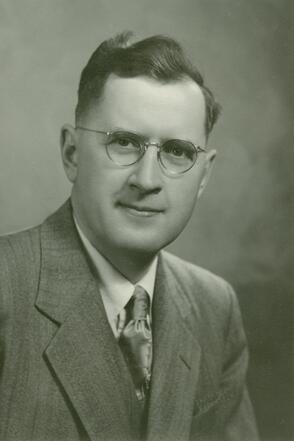
Zona do título e menção de responsabilidade
Título próprio
Dr. Harold E. Johns - Portrait
Designação geral do material
- Material gráfico
Título paralelo
Outra informação do título
Título e menções de responsabilidade
Notas ao título
Nível de descrição
Item
Entidade detentora
Código de referência
Zona de edição
Menção de edição
Menção de responsabilidade da edição
Zona de detalhes específicos de materiais
Menção da escala (cartográfica)
Menção da projecção (cartográfica)
Menção das coordenadas (cartográfico)
Menção da escala (arquitectura)
Autoridade emissora e denominação (filatélica)
Zona de datas de criação
Data(s)
-
[ca. 1948] (Produção)
Zona de descrição física
Descrição física
1 photograph : b&w
Zona dos editores das publicações
Título próprio do recurso continuado
Títulos paralelos das publicações do editor
Outra informação do título das publicações do editor
Menção de responsabilidade relativa ao editor do recurso contínuo
Numeração das publicações do editor
Nota sobre as publicações do editor
Zona da descrição do arquivo
Nome do produtor
História custodial
Âmbito e conteúdo
Head and shoulders image of Dr. Harold E. Johns, professor of Physics from 1945-1956.
Bio/Historical Note: Dr. Harold Elford Johns was, perhaps, the most influential medical physicist in Canadian history. He was born in 1915 in West China where his parents were educational missionaries. After the family returned to Canada in 1926, Dr. Johns obtained an MA in Physics from McMaster University and a PhD from the University of Toronto. He worked first at the University of Alberta in Edmonton and then at the University of Saskatchewan (1945-1956), where he became interested in cancer treatment. In May 1948 Drs. Johns, Newton Haslam and Leon Katz, all Physics faculty, travelled to Milwaukee to inspect the betatron that had been built for Saskatchewan. In August of that same year, the U of S installed in the Physics Annex the first betatron in Canada - the world’s first betatron used for a cancer treatment program. Dr. Johns then began the design and construction of one of the first cobalt-60 teletherapy units. In 1951 Dr. Johns and his graduate students became the first researchers in the world to successfully treat a cancer patient using cobalt-60 radiation therapy. In early 1952 Maclean's magazine had dubbed the cobalt-source radiotherapy machine the cobalt bomb - a tongue-in-cheek tribute to this peaceful use of nuclear technology. Dr. Johns’ pioneering work in cobalt-60 teletherapy became the gold standard for radiation therapy for many years and thousands of units were installed worldwide, helping countless patients. Working with Dr. Johns was Dr. Sylvia Fedoruk (1927-2012), part of the team of U of S scientists involved in the development of the cobalt-60 unit. The original treatment device was used in Saskatchewan until 1972. The work Dr. Johns and his team did on the physics of high energy photon beams was fundamental, and still forms the basis of most treatment planning systems in use today. In 1953 he published the first edition of “The Physics of Radiology” which became the leading textbook in its field for several decades. In 1956 Dr. Johns became head of the Physics Division of the Ontario Cancer Institute and professor of Medical Biophysics at the University of Toronto. For several years he studied the chemical processes that lead to radiation damage, and finally in the 1970s he turned his hand to x-ray imaging. All of Dr. Johns’ work was aimed at improving the diagnosis and treatment of cancer. The U of S awarded Dr. Johns an honourary Doctor of Laws degree in 1959. Harold Johns died in 1998.
Zona das notas
Condição física
Fonte imediata de aquisição
Organização
Idioma do material
Script do material
Localização de originais
Disponibilidade de outros formatos
Restrições de acesso
Termos que regulam o uso, reprodução e publicação
Photographer: Charmbury
Copyright holder: Unknown

